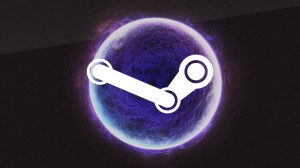 On September 20th, users of the popular videogame distribution platform Steam were greeted with the news that Valve Corporation would be releasing a new operating system; SteamOS. This had been foreshadowed by Valve’s Gabe Newell at LinuxCon the week before, but the news still came as a pleasant surprise for both PC and console gamers alike.
On September 20th, users of the popular videogame distribution platform Steam were greeted with the news that Valve Corporation would be releasing a new operating system; SteamOS. This had been foreshadowed by Valve’s Gabe Newell at LinuxCon the week before, but the news still came as a pleasant surprise for both PC and console gamers alike.
What is SteamOS?
SteamOS is a completely open source operating system designed to function well with the Steam platform. It’s meant to ship with Valve Corporation’s new Steam Machine videogame console, and was designed to be more like the OS of a PS3 or Xbox than the OS of your desktop computer, although users will be able to install SteamOS on their home PCs if they so choose.
 SteamOS is based on the Linux kernel, which means that most Windows programs won’t be able to run on it unless a Linux version exists. Since SteamOS isn’t meant to replace your current PC or Laptop OS, this shouldn’t be a reason to not use SteamOS.
SteamOS is based on the Linux kernel, which means that most Windows programs won’t be able to run on it unless a Linux version exists. Since SteamOS isn’t meant to replace your current PC or Laptop OS, this shouldn’t be a reason to not use SteamOS.
Why should I care?
Traditionally, Linux has enjoyed less market share and less popularity than Mac OS and Windows. This is at least in part because it does not natively support many applications and programs that Windows does. The lack of support for popular applications drove consumers to other operating systems, and the relatively large user bases of Windows and Mac OS drove developers to create applications exclusively for those platforms. In order for this positive feedback loop to break, a big player in the tech field would have to create a reason for developers to code for Linux and users to actually use those programs.
By basing the operating system that ships with their new game consoles on Linux, Valve corporation has now heavily incentivized developers to at least support both Windows and Linux. By not supporting Linux, developers will be missing out on not only the very small share of the market that uses Linux exclusively, but they will not be reaching the share of the market that owns a Steam Machine. How heavily the incentivize will depend on how well the Steam Machine sells and vice versa, but Valve Corporation has proven itself to be, if nothing else, an excellent salesman.
If SteamOS manages to drive the percent market share of Linux up, Linux users can expect more than just a greater number of videogames to be developed for their chosen distribution. Increased popularity means an increase in the amount and quality of consumer software available, although it also means more and nastier malware being developed alongside it. No matter what, SteamOS’s success could mean a dramatic change in the operating system ecosystem.
How do I get SteamOS?
SteamOS will ship with Valve’s Steam Machine consoles, due at some point in 2014. Users will also be able to download SteamOS and use it on their non-Steam Machine computers completely free of charge. Get involved sooner by beta testing the OS.
Resources:
http://store.steampowered.com/livingroom/SteamOS/